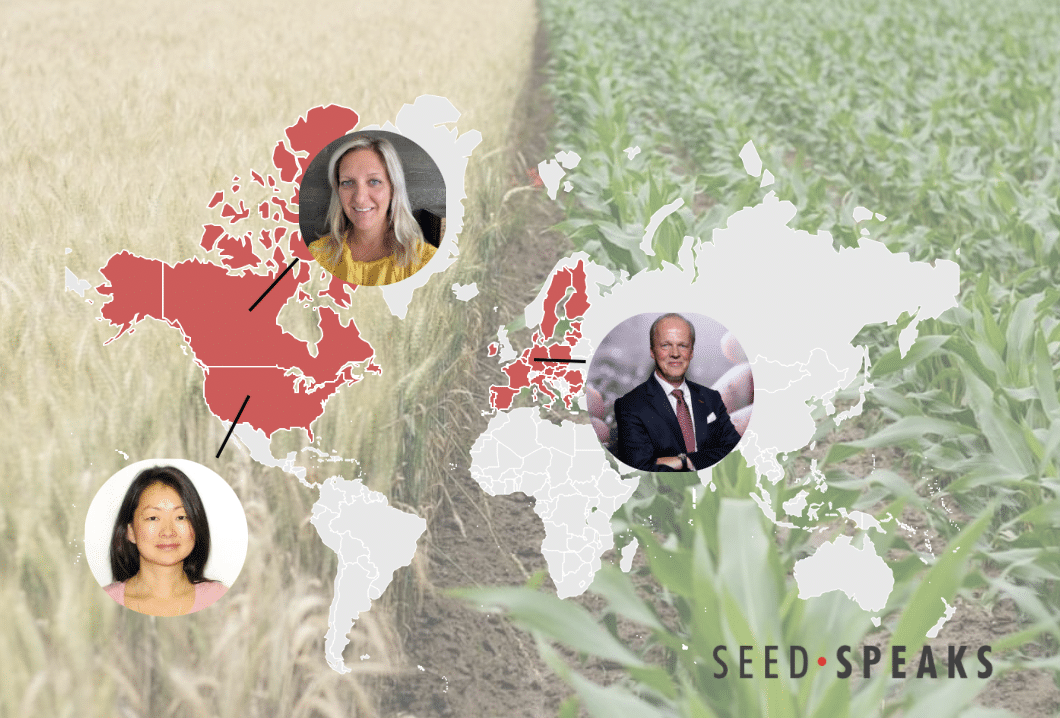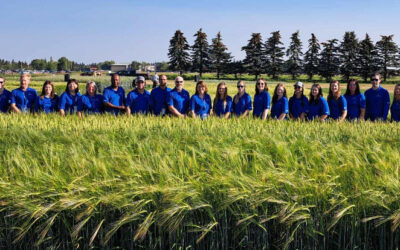With the potential to cut breeding time in half, gene editing and other new breeding technologies prove the sky is the limit – that is, if they’re not strangled by red tape and regulations before takeoff.
“It has democratized the type of crops and traits that people want to develop,” says Fan-Li Chou, American Seed Trade Association vice president of scientific affairs and policy. “So that to me is clearly a success and these tools are used in scientific discovery that helps the breeding community at large.”
There’s still uncertainty though. Because agriculture is a key component to global trade, the way each country across the globe regulates these products will have trade implications.
Because the technology is still so new – and evolving – policymakers around the world are still finalizing regulatory process and approaches. Three key producers and trade partners, Canada, European Union and United States, are already taking different approaches to managing products created by these technologies.
International Trade
For now, there are little to no trade impacts from differing regulatory processes globally. However, as these are finalized, that could change.
“There are no changes (to trade yet),” says Garlich von Essen, secretary general at Euroseeds. “The regulatory framework is not ready and we don’t have (NBT) products that are now commercially grown in any part of the world that would actually start entering our trade flows. So, for now we’re still talking in a bit of a theoretical construct.”
Differences in policies around the world would complicate international trade. This underscores the importance of consistent rules and regulations across the globe, he continues. “They will, of course, differ slightly, but we can’t have products that are considered to be conventional in, let’s say, North and South America that are considered a GMO in EU and parts of Asia.”
Any differences would complicate not only the movement of food products but seed and breeding materials as well. As policies are finalized, seed industry stakeholders will want to be aware of what’s decided around the world.
“For large commodity crops, seed developers typically won’t launch products in Canada until they have all key export market approvals,” says Jennifer Hubert, CropLife Canada director of plant biotechnology. “So, we need pragmatic solutions globally that are not necessarily identical, but aligned.”
At risk is the time it takes to get products to market, higher research spending to jump through more regulatory hoops and consumer access to healthy food options.
Bright Future
While the science is still new, the potential is nearly endless. From crops to medicine and even in livestock, gene editing could bring dramatic changes to access to food and even the precision of medicine.
“From a scientific perspective, the potential is limitless right now,” Chou says. “It’s a powerful research tool and a powerful predictive breeding tool. So, around that vein, I think there’s just a lot of excitement among the scientific and breeding community.”
Hubert and Chou each pointed to South American countries, specifically Argentina, for leading the charge in a creating a pragmatic and risk proportionate regulator approach for this technology. While they’re not regulated as a GMO, the products do still have to meet common food safety standards and other criteria before use.
As countries in the EU look to achieve the goals of the European Green Deal, it could open doors for gene editing technologies and other new breeding techniques.
“The Farm to Fork Strategy (within the Green Deal) basically says we want to become greener, so we want to use less fertilizers and pesticides,” von Essen says. “If you really want to have a significant reduction of crop protection products the problem of pests and diseases doesn’t go away, so you need to look for alternatives.”
Advocates for advanced breeding technologies in the countries have encouraged the public to look to breeding as a solution.
“We’re not saying plant breeding or new breeding technologies are the silver bullet that will resolve all issues,” he continues. “But it is a set of tools you can use to speed up [crop] improvements.”
__________________________________________________________
Status: Canada
Health Canada leads the country in creating policies for new technologies and as of press time, citizens are awaiting guidance from the agency. Experts can draw on past experiences to infer what Health Canada might soon announce.
“We’ve been having conversations in Canada for quite some time, even before new breeding techniques became a big thing,” says Jennifer Hubert, Crop Life Canada director of plant biotechnology. “Canada has a product-based approach that’s pretty unique in the world.”
Regardless of the technology used to create something, it’s the final product that is scrutinized. That means any technology – even conventional breeding – can be regulated like a GMO product.
“We have seen, although rare, conventional breeding products go through the same system as a GMO would,” Hubert says. “They’re going to be looking more at the product than the technology but with that comes challenges as there’s a lot of ambiguity. How do you draw the line on how you define something?”
A recent survey in the country showed that even breeding regulations for tactics commonly used today are still unclear for breeders. The seed industry is seeking more clarity for not only NBTs, but all ag products.
“Ultimately we determined the old rules were not working and we need clarified rules to better determine what type of product requires an assessment,” she says. “Health Canada has a draft guidance they issued in March and they held a public consultation period.”
Now it’s just a waiting game for final the final assessment to be released.
Status: EU
Determining how to define and regulate products created through new breeding technologies is no easy task. In the EU, it has, so far, boiled down to whether or not these products are considered GMO.
“Almost everyone is realizing now that it’s not as simple as that,” says Garlich von Essen, secretary general at Euroseeds. “What we’re actually talking about is the technologies that can be used in very different ways and can achieve very different kinds of products. But our existing EU rules for genetically modified organisms only look at the technology used.”
Even if the product created doesn’t have any genetic modification when its commercialized, using a process that can create GMOs means it will be considered a GMO itself. As it stands, new breeding techniques are to be classified the same way a GMO is in the EU.
“We’ve started the discussion that says we need to look more at the product that results from the technology,” von Essen adds. “There is growing consensus that the old rules don’t work for these technologies.”
The EU Commission has initiated the preparation of a new legislative proposal that reflects this realization. It’s unknown when they’ll reach a final decision.
Status: U.S.
Three agencies in the U.S. are tasked with creating regulatory processes for new breeding technologies. These include the Environmental Protection Agency (EPA), U.S. Department of Agriculture (USDA) and the Food and Drug Administration (FDA).
“USDA was the first out of the gate and they finalized their regulations that, among other things, exempt certain categories of modified plants because they could be produced through conventional breeding techniques,” says Fan-Li Chou, American Seed Trade Association vice president of scientific affairs and policy. “Now we’re waiting for the EPA and FDA to do similar updates and revisions to their policy guidelines.”
EPA released a proposal this past year that in principle aligns with USDA’s approach – it just awaits finalization. FDA has yet to announce its plans to address this issue.
“We’re looking for all three agencies to have consistency among them,” Chou adds.
Related Articles
The Buzzword Gap Between Ag and Consumers





